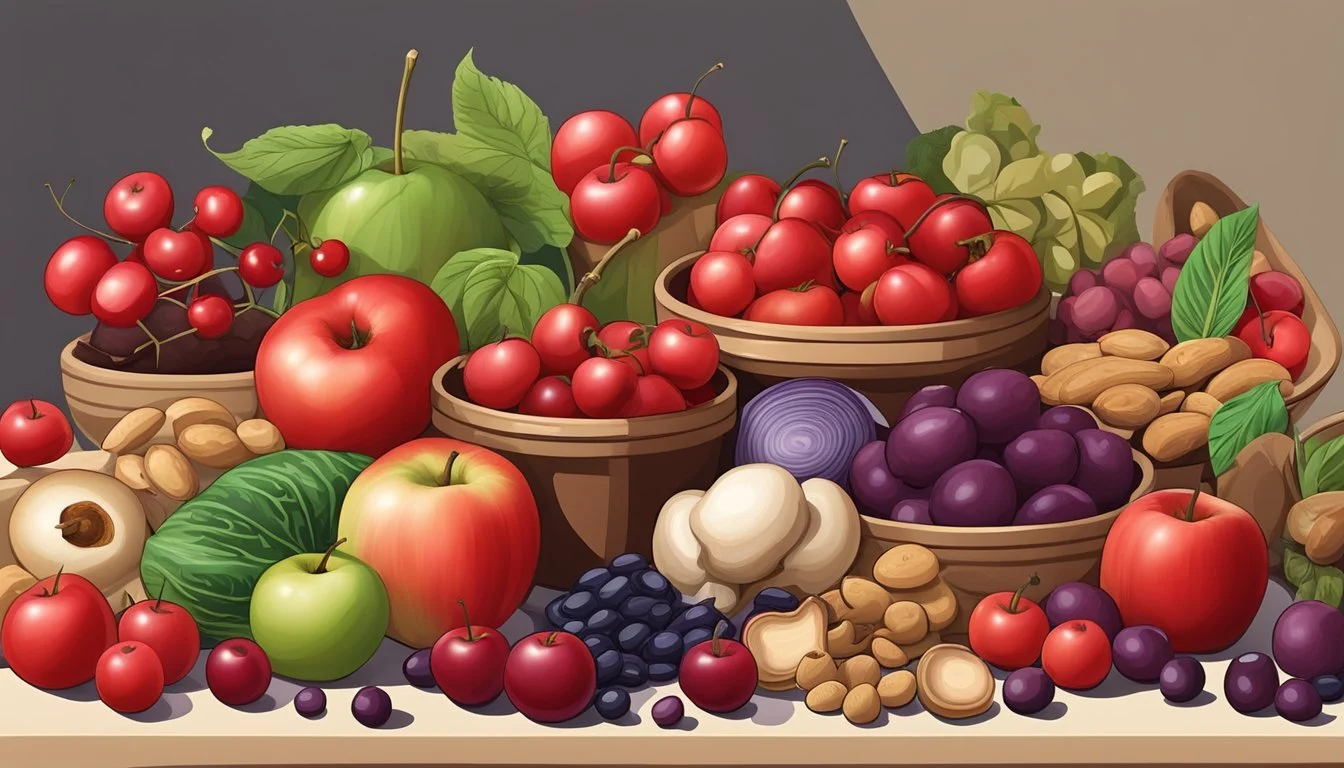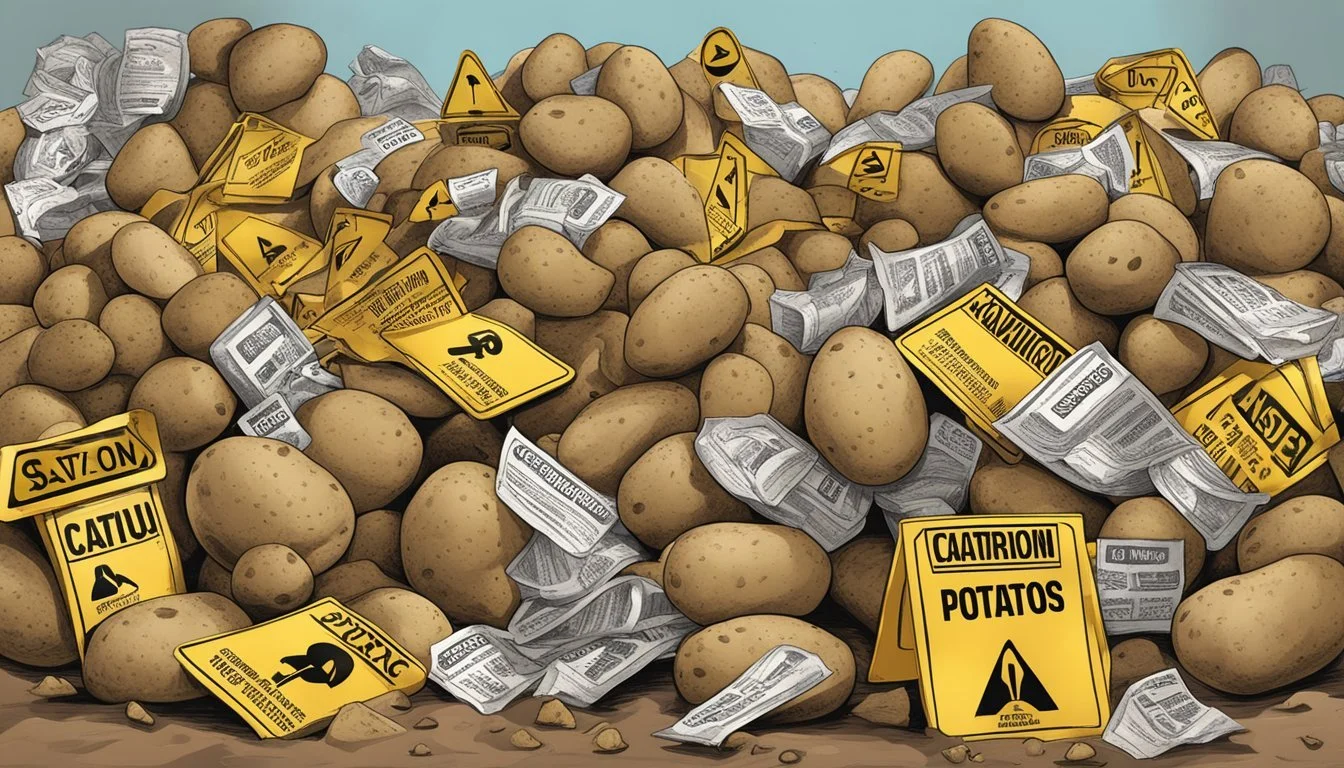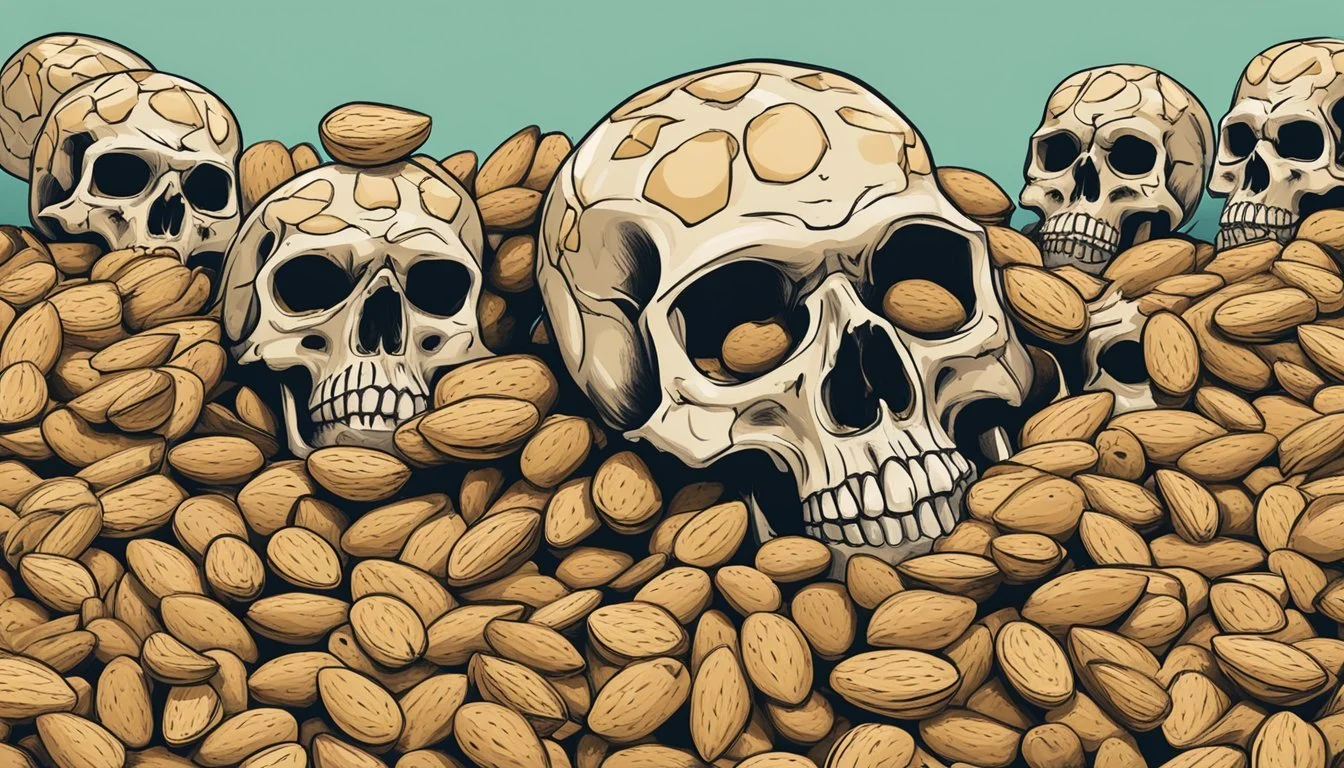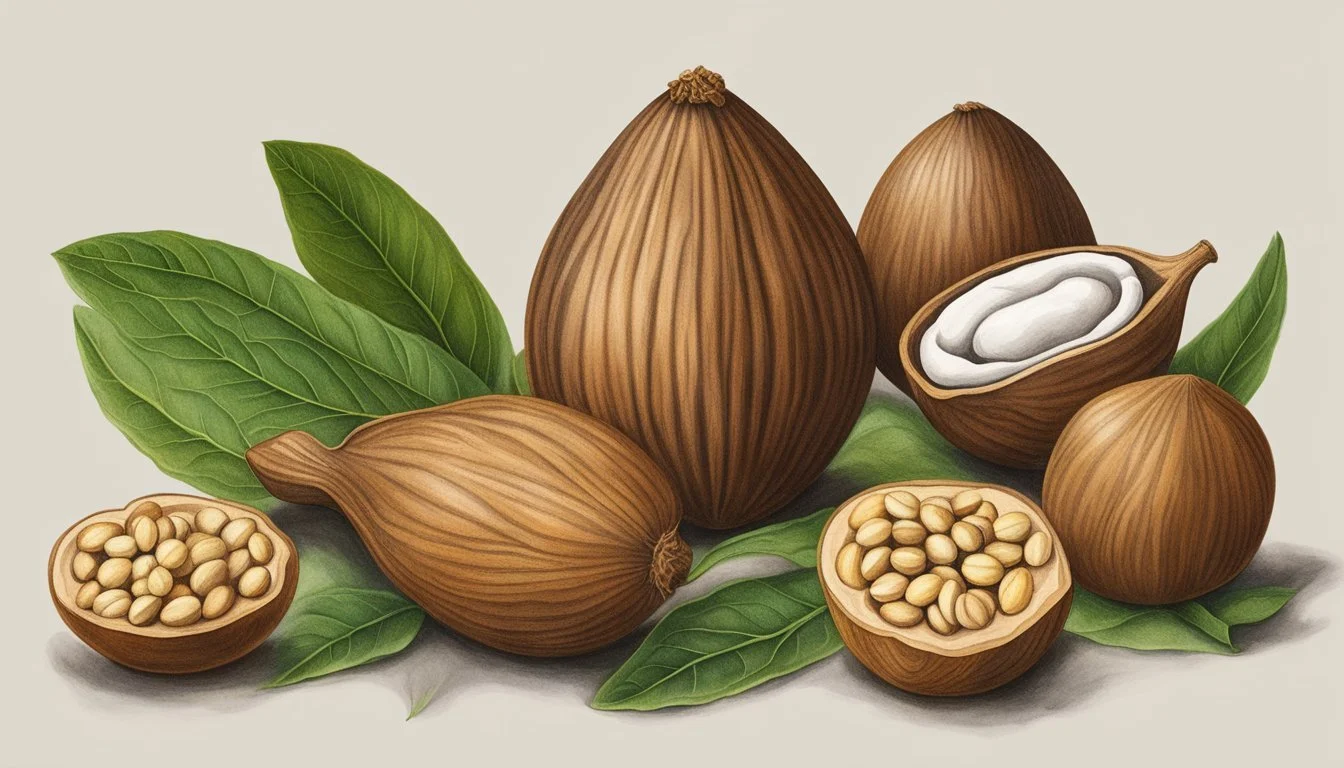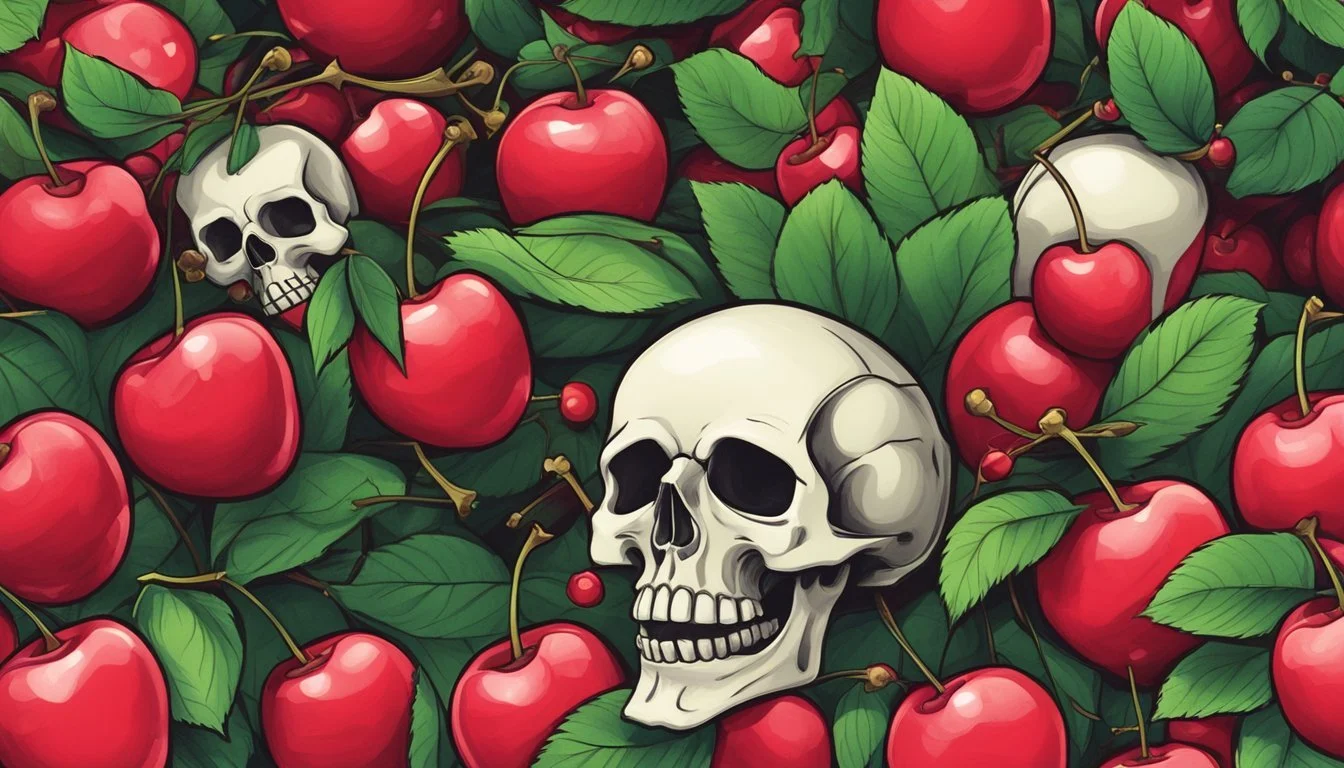10 Foods That Were Once Believed to Be Poison
From Myths to Facts
Throughout history, various foods that are now staples of our diets were once believed to be harmful or even deadly. These misconceptions were often rooted in misinformation, cultural beliefs, and accidental associations. Unveiling the fascinating journey of how popular foods overcame their dubious reputations offers an intriguing look into the evolution of culinary practices and food safety perceptions.
Understanding the historical context behind these beliefs sheds light on the ways in which food science and global exchange have transformed the culinary landscape. This article explores ten such foods, providing insight into the myths and facts that shaped their acceptance.
1) Tomatoes
Tomatoes originated in South America and were brought to Europe by Spanish explorers in the early 16th century.
Initially, Europeans grew tomatoes as ornamental plants. They were hesitant to eat them, fearing they might be poisonous.
In the late 18th century, tomatoes gained a poisonous reputation due to their interaction with pewter plates, commonly used by the aristocracy. The fruit's acidity would leach lead from the plates, leading to lead poisoning.
Tomatoes were called "poison apples" as a result.
Despite their initial fear, tomatoes eventually became a staple in global cuisine.
Today, they are an essential ingredient in dishes worldwide.
2) Potatoes
Potatoes first arrived in Europe in the late 16th century, yet they faced much suspicion. Many Europeans considered the potato to be harmful and even poisonous. They linked the vegetable to leprosy and other diseases due to its relation to the nightshade family.
One significant case illustrating these fears occurred in 1899. Cooked potatoes containing solanine caused solanine poisoning among 56 German soldiers. Though all recovered, this incident highlighted the potential risks of consuming improperly stored or prepared potatoes.
Additionally, the green parts of potatoes, including leaves and shoots, contain solanine. This poisonous alkaloid can lead to severe health issues if ingested. The presence of solanine contributed greatly to the negative perception of potatoes during that era.
Early myths also claimed potatoes were a source of evil, due to their unfamiliar roots and growth patterns. People were unaccustomed to eating the tubers, causing further suspicion. It took many years of education and demonstration for the public to accept potatoes as safe and nutritious.
Today, potatoes are a staple food worldwide. However, their journey to acceptance in Europe serves as a reminder of how new and unfamiliar foods can often be met with fear and hesitation. The evolution of the potato’s reputation from feared to favored highlights the complex relationship between food, culture, and trust.
3) Eggplants
Eggplants, also known as aubergines, belong to the nightshade family, which includes other plants like tomatoes and bell peppers. Historically, these glossy purple vegetables were viewed with suspicion.
In Europe during the 12th century, eggplants were associated with their more toxic relatives, Mandrake and Belladonna. This connection led to the belief that they were potentially deadly.
Modern science reveals that eggplants contain solanine, a compound found in nightshades. While solanine can be toxic in large amounts, the levels in a ripe eggplant are too low to cause harm under normal consumption.
Additionally, eggplants contain nicotine, though in very small quantities. One would need to eat between 20 and 40 pounds of eggplant to match the nicotine content of a single cigarette.
Despite these misconceptions, eggplants are safe and nutritious when prepared and consumed correctly. Cooking methods such as sweating or soaking can reduce bitterness and unwanted compounds.
Today, eggplants are celebrated for their versatility and are featured in many culinary traditions globally.
4) Rhubarb
Rhubarb is often recognized for its tart, crisp stalks, commonly used in desserts like pies. Despite its culinary uses, many might not know the dangers lurking in its leaves.
The leaves of the rhubarb plant contain high levels of oxalic acid. This substance can cause severe health issues, including kidney failure, when consumed in significant amounts. Even a small portion can lead to nausea and difficulty in breathing.
Historically, there has been some confusion regarding the safety of rhubarb. While the stalks are safe to eat and even nutritious, rich in antioxidants and Vitamin K, the leaves are decidedly not. Rhubarb leaves are so toxic that ingesting them can lead to a potentially fatal dose.
Due to these risks, it's crucial to always discard the leaves and only consume the stalks. This distinction helped ensure that rhubarb has remained a staple in kitchens without posing a significant health risk.
5) Almonds
Almonds were not always the snack we enjoy today. Ancient varieties of almonds were often bitter and toxic due to amygdalin, a compound that converts to cyanide when ingested. Just a handful of these wild almonds could be lethal to humans.
Selective breeding transformed almonds from poisonous to edible. Over time, farmers cultivated sweeter, safer almond varieties. This meticulous process ensured that the harmful amygdalin levels were minimized.
Today's almonds are a staple in many diets, appreciated for their nutritional value and versatility. They are rich in healthy fats, protein, and vitamins. The transformation of almonds from a dangerous nut to a nutritious snack highlights the importance of agricultural innovation.
6) Nutmeg
Nutmeg is a popular spice known for its warm, sweet flavor, but it has a history of being considered poisonous.
Small amounts found in recipes are typically harmless. Consuming larger quantities can lead to serious health issues. As little as 5 grams of nutmeg can cause symptoms like hallucinations, nausea, and dizziness.
There were notable reports of nutmeg poisonings over the years. One famous case dates back to 1576, involving a pregnant woman in England who ingested a large amount of nutmeg.
In recent decades, such poisonings have been reported in various medical articles and studies. A review of cases by Illinois poison control centers identified 32 incidents over 10 years.
While many of these poisonings were accidental, some were deliberate. These involved young people experimenting with the spice to induce psychoactive effects, especially during the 1960s and 1970s.
Nutmeg's dual reputation as a spice and a potential toxin has made it a subject of interest in both culinary and medical fields.
7) Cassava
Cassava, also known as manioc or yuca, is a versatile root vegetable widely consumed in many parts of the world. It has a history marked by both its nutritional benefits and its potential dangers.
This starchy tuber is a staple food in many tropical countries and a crucial source of energy. It contains important nutrients such as protein, calcium, and fiber.
Despite its benefits, cassava contains naturally occurring cyanogenic glycosides, compounds that can produce cyanide. This toxin can be deadly if the cassava is not properly processed.
Processing methods include soaking, cooking, and fermenting the cassava to reduce toxicity levels. When prepared safely, cassava is used in various dishes, such as fufu in West Africa and bammy in Jamaica.
In its unprocessed form, cassava's cyanide content makes it hazardous. Consuming raw or improperly prepared cassava can lead to serious health risks, including poisoning and death.
The plant has a significant pest resistance due to its toxic properties, which protect it from harmful insects. Historically, communities have developed intricate knowledge of preparation techniques to safely consume cassava.
8) Mushrooms (Certain Varieties)
Certain mushrooms have a long history of being feared as poisonous. This fear is not unfounded, as some mushrooms contain lethal toxins. For instance, the Amanita genus includes some of the deadliest mushrooms in the world. Amanita mushrooms can contain amanitin, a toxin that can cause severe liver and kidney failure.
Conocybe filaris is another example. This mushroom, common in the Pacific Northwest, contains the same deadly toxins as the infamous death cap mushroom. Even though it may look harmless, ingestion can lead to fatal outcomes. Symptoms often begin to show between 6-24 hours after consumption.
Mushrooms have varied appearances, making it crucial for foragers to use identification guides or apps. These tools help distinguish between safe and poisonous varieties. Some poisonous mushrooms are bright red or purple, while others might have slimy or scaly caps, adding to the complexity of identification.
9) Cherries
Cherries were once believed to be poisonous due to the presence of cyanide in their pits. The kernel inside cherry pits contains amygdalin, which can release cyanide when crushed or chewed.
There were instances in history when people mistakenly thought consuming cherries could lead to serious illness or death, especially if the pits were accidentally ingested.
The connection between cherries and potential toxicity became a more prominent concern in the 19th century. For example, it's often debated whether President Zachary Taylor died from consuming cherries and iced milk, which might have led to acute gastroenteritis or food poisoning.
Despite these fears, cherries are safe to eat in moderation. The flesh of the fruit itself does not contain harmful levels of toxins. Modern knowledge shows that the tiny amounts of cyanide in the pits require significant quantities to pose a serious threat.
10) Apples
In medieval Europe, apples were sometimes feared due to their association with witchcraft and poison. Folklore suggested that witches used apples in their spells and potions, leading to caution about the fruit.
Additionally, apple seeds contain amygdalin, which can release cyanide when metabolized. Although a large quantity of seeds would be required to cause harm, this fueled fears.
Furthermore, some wild apple varieties were indeed bitter and potentially dangerous. People learned to avoid certain types, which reinforced the belief that apples could be poisonous.
Gradually, as understanding of different apple varieties grew, the fruit's reputation improved. Apples became a staple in diets and are widely enjoyed today.
Historical Beliefs and Misconceptions
Throughout history, various cultures have held misguided beliefs about certain foods being poisonous. These misconceptions often stemmed from a lack of scientific understanding and were perpetuated through cultural myths and superstitions.
Ancient Civilizations and Food Myths
In ancient Rome, cucumbers were believed to possess magical properties. Pliny the Elder wrote about their usage in promoting fertility. Women wore cucumbers around their waists, and midwives carried them for good luck during childbirth. This practice highlights how ancient civilizations often attributed supernatural qualities to everyday foods.
The Egyptians had their own food myths. Garlic was revered for its supposed ability to ward off evil spirits and cleanse the body of toxins. Despite its beneficial health properties, some believed it could also be toxic if consumed in excess.
In China, certain mushrooms were feared, not just for their toxic varieties, but also due to myths about them causing madness and death. Even though many mushrooms are edible and nutritious, these ancient beliefs influenced their consumption.
Medieval Europe: Fear of Poison
During medieval times, the fear of food poisoning was rampant. Mustard, for instance, was considered dangerous due to its intense heat. It was believed to cause internal injuries and mental disturbances. This came from an overestimation of its natural isothiocyanates, which are actually harmless in normal culinary quantities.
Rye bread caused widespread panic due to ergot contamination, which produces toxic alkaloids. The hallucinations and gangrene caused by ergotism were so severe that people associated all rye products with deadly poison, even when properly prepared.
Another common misconception involved tomatoes. Known as "wolf apples," tomatoes were thought to be poisonous in Europe due to their relation to deadly nightshade plants. It wasn’t until the 18th century that they gained acceptance as a safe food.
Scientific Discoveries and Changing Views
Scientific advancements have played a crucial role in changing how we perceive certain foods once believed to be poisonous. These breakthroughs in food safety and research have debunked myths, contributing to a more informed public.
Advancements in Food Safety
The 19th and 20th centuries brought significant progress in food safety. Notable figures such as Dr. Harvey Washington Wiley, who spearheaded efforts to regulate the food industry, are prime examples. Wiley's work led to the establishment of the Food and Drug Administration (FDA) in the United States, providing a system to ensure that foods were safe for consumption.
Stringent guidelines and rigorous testing methods were introduced, reducing the mistrust surrounding various foods. This period also saw the invention of better preservation techniques, effectively diminishing foodborne illnesses. The development of canning, pasteurization, and refrigeration further safeguarded the public.
Role of Research in Debunking Myths
Extensive research has been vital in dispelling food-related myths. For instance, the fear of tomatoes in Europe during the 1700s stemmed from instances of lead poisoning caused by the acidic fruit reacting with pewter plates. Scientific studies revealed the true cause of the poisoning, absolving tomatoes of blame.
Research has also clarified misconceptions about other foods. For example, thorough investigations into the nutritional benefits and potential hazards of foods like mushrooms and chocolate have led to their acceptance as safe and even beneficial. These findings have reshaped public opinion and restored faith in certain foods formerly considered dangerous.
Scientific inquiry, supported by technological advancements, has thus been fundamental in transforming food safety perceptions.

